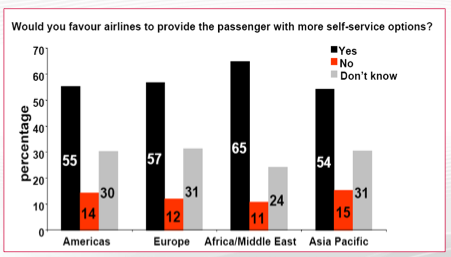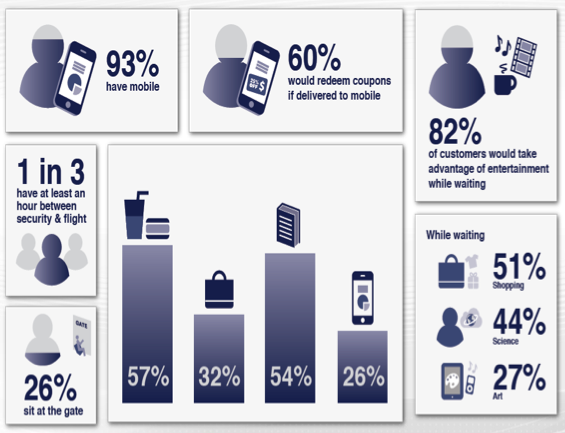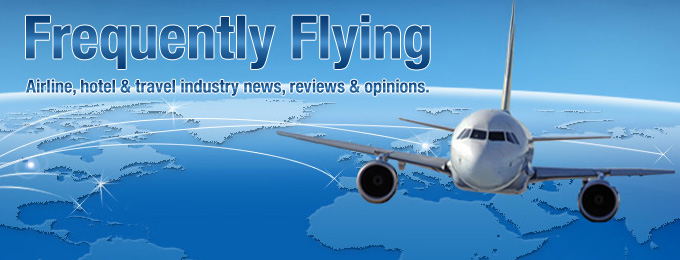Yesterday I listened in on another Air Transport World webinar discussing the technology we interact with as travelers at the airport. The specific focus was to outline how common use stations, such as the kiosks we use to check in and the terminals airline agents use for the same functions, can speed travel, reduce airline & airport costs and offer additional synergies benefiting everyone involved. Entitled “One Platform, Many Advantages,†the four main speakers reviewed the technology and explored future potentials and current gaps in a seamless passenger flow. It will be available for anyone to listen to shortly by visiting this link. In the meantime, I’ll summarize some of the key points.
First up is the jargon for which I was unfamiliar until yesterday, but fully recognize having used them at airports. They are CUPPS, CUTE and CUSS (no, not that kind).
CUPPS: Common Use Passenger Processing Systems
CUTE: Common Use Terminal Equipment
CUSS: Common Use Self Service
In my understanding, CUPPS covers both CUTE, those terminals used by multiple airlines at the same airport, and CUSS, those kiosks used by you and me to check-in for a variety of airlines. In any case, it’s all referring to a single station being able to access more than just a single airline’s system.
The CUTE terminals have been around for 15-20 years where multiple airlines can use the same check-in locations and still access the airline’s proprietary system to process check-in for passengers. This is very common at the international terminals of just about every airport where dedicated stations for an airline operating one or two flights just doesn’t make sense. One hour Cathay Pacific could be using check-in desks 10-19 and two hours later Emirates would be using the same positions to check-in their passengers.
Last week I saw a number of CUSS kiosks in the International Terminal at San Francisco Airport where you could check-in for any number of airlines at a single unit. John Wayne Airport in Orange County, California is another airport using CUSS stations for multiple airlines, where in this case the airlines are flying all domestic trips. Instead of “where’s my airline’s check-in desk†when you walk into an airport, it’ll become “where’s the nearest kiosk?â€
Basically, the technology is pointing to a nearly airline agent-free traveler experience with everything done by “self;†check-in, bag tagging, document scanning, flight rebooking, boarding and bag recovery. Here it is pictorially:

Image courtesy IATA & ATW
It was pointed out that gaps remain where human interaction remains necessary like at security and immigration & customs, and of course not everyone has bought into many of the newest abilities like self-bag tagging or self-boarding gates. It’s right around the corner, though, isn’t it? Also, our mobile devices will become a critical part of this future with 3D bar codes scanned from our phones needed to use some of these devices.
The first encounter I usually have flying domestically with an airline agent is when my boarding pass is scanned at the gate when I get on the plane. The picture painted here is that as soon as the automated baggage & boarding gates come out, a flight attendant will be the first actual airline employee of contact. It’s all but likely going forward, so front-line staffing for airlines at airports will do nothing but continue to drop.
One of the slides quoted a survey where 73 percent of respondents “said they would be more likely to choose a travel provider that offered them greater control over managing their entire travel experience through self-service.†Count me as one of them. Here’s the results from another similar poll in 2011:

Image courtesy NCR & ATW
Another chart I found interesting is as follows. It shows the opportunities airport vendors have to attract passengers during their down time traversing airport terminals:

Image courtesy NCR & ATW
I look forward to more self-service kiosks handling some of the agent-driven activities today, but will still always want a human available. Their numbers will drop exponentially as this technology gains acceptance, but it’s the likely future of our airport experience. What do you think? Too “Jetsons†for you, or does this fully self-serving automation appeal to you, too?


Why is it that airport self-service kiosks rarely function for elite level FT program members? “See an agent” is the usual displayed error dialogue.
Are you talking about the shared multi-airline kiosks? I honestly don’t have any experience there, but my airline’s kiosks have worked 98% of the time for me this year.
How do we get our bumps?
Delta’s system will probably be used going forward where when you check-in, it’ll ask you if you want to volunteer. Since every gate will still need an agent to meet the plane, that person would probably be the sole agent to handle oversales.
Not that they do a very good job of it today, but how does an agent-less gate work in terms of enforcing boarding zones, priority boarding, etc? I can see it being an absolute mob if at 1:35pm, the door opens and you can start going through the turnstile to get on the plane.
Here I’m sure by scanning your BP, it’ll beep and not “open” the doors to let you pass if it’s not your turn. In that case, yes, it’ll be a bit of a cluster while that person gets out of line. I’m curious to know how Continental’s current testing is going with their self-boarding gate at IAH.
Check out QF’s domestic terminal in Sydney. You can check bags without interacting with a person now. Their RFID bag tags are a bit of a status symbol in Sydney’s CBD these days.
There are quite a few issues raised by this technology, some of which will be difficult to solve and will continue to require human intervention for years to come.
The most obvious one is what happens when something breaks, or there’s bad weather or the smooth operation of the station is compromised? With fewer staff on the ground, there’s less ability to recover and far, far more angry customers.
Secondly, humans have quirks and lots of humans have lots of quirks. Computerised systems don’t like quirks and reject them. When you are processing hundreds or thousands of people a day, you will find that there are significant numbers of situations which arise which have not been envisaged by the programmers – or which have been envisaged but for which it’s not easy to provide a solution.
Even today, when I check in with UA on an international flight from the USA, I can’t do it online – in common with (according to an agent) about 20% of their elite customers. That’s because we are US citizens resident abroad and the system doesn’t see a return trip to the US. So it rejects us and we have to see an agent. Apparently, there are so many different documentation permutations that they gave up trying to sort it out. I give that as an example – it doesn’t affect many people, but there are (I have read) more Americans living in Britain than Montana, so it’s not unusual. Think of all the other examples, some I’m sure, really weird. It’s unlikely that we can do away with frontline staff any time soon.
Airline staffing at airports will absolutely still be necessary, as you say, but levels will definitely continue to drop. And you’re right about humans having quirks. Speaking of quirks and sorry to generalize here, but I think the Southwest passenger will have more issues figuring the machines out than a United passenger. Yup, I went there and said that. As far as United, I think IT there is just being incredibly lazy. If they want to be the “leading airline,” then they need to work out all the permutations. Time will tell.
I experienced this on SAS in Norway–no agents around, simply check-in on a kiosk, out pops your bag tag, affix it and place it on the belt yourself, then use the automated boarding lanes (which I am also seeing more and more in Frankfurt).
As with everything, we need to look to Europe to see what we’ll get here in the USA in 10+ years.
I expect this automation trend to happen to retail stores as well in the next 20 years.
Good-bye more “unimportant” jobs and human interaction– hello technology.
[roll-eyes]
What happens when the kiosks freeze up on a busy day? What happens when a power spike/surge or brief power loss/brown out/black out happens? [and backup generators somehow fail]